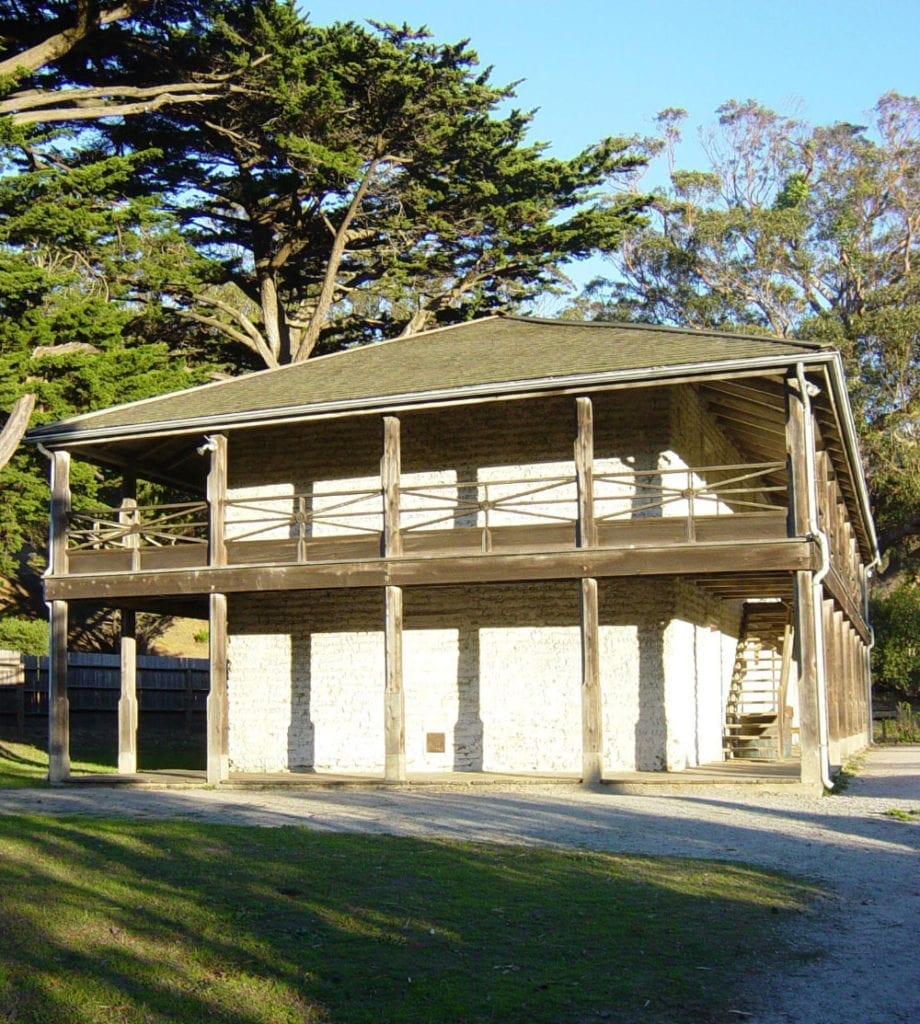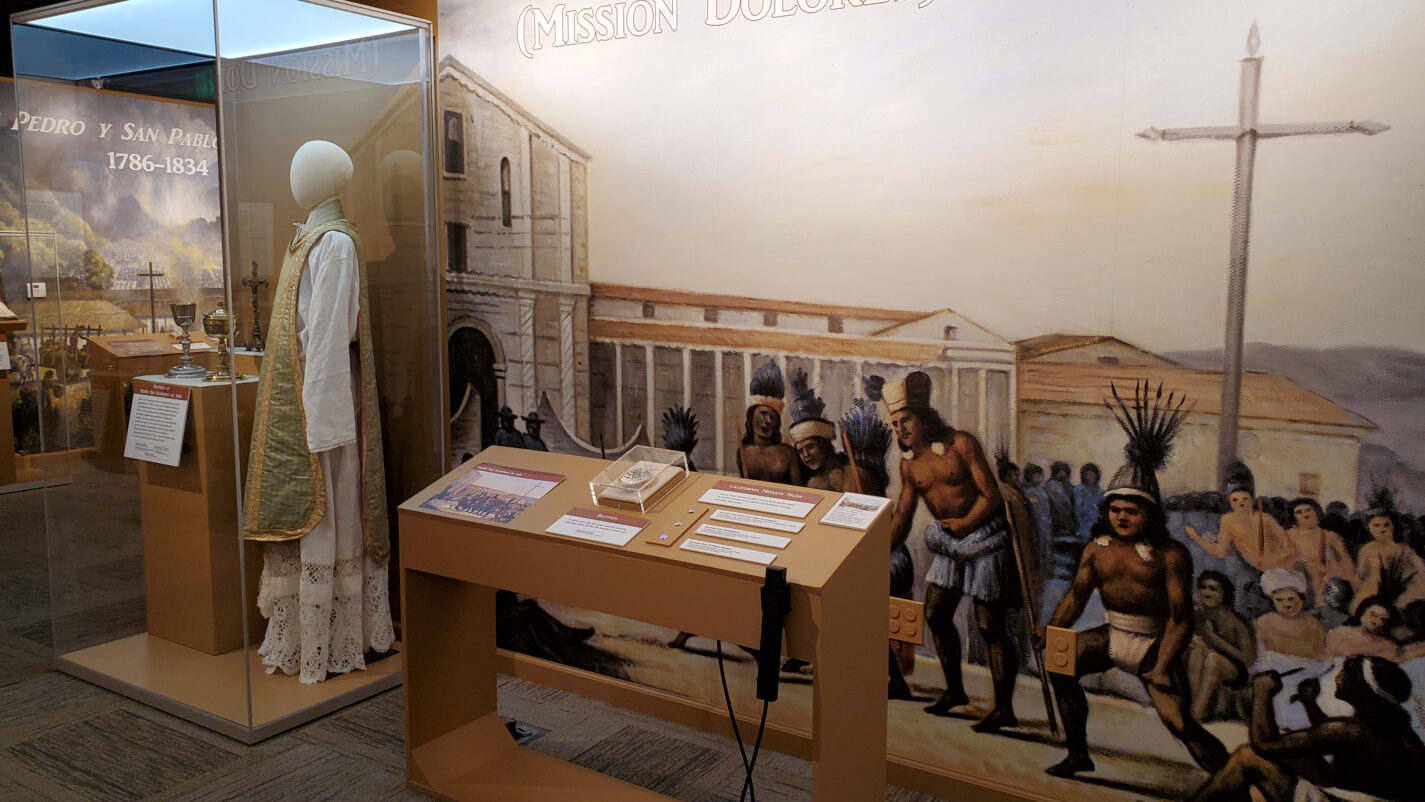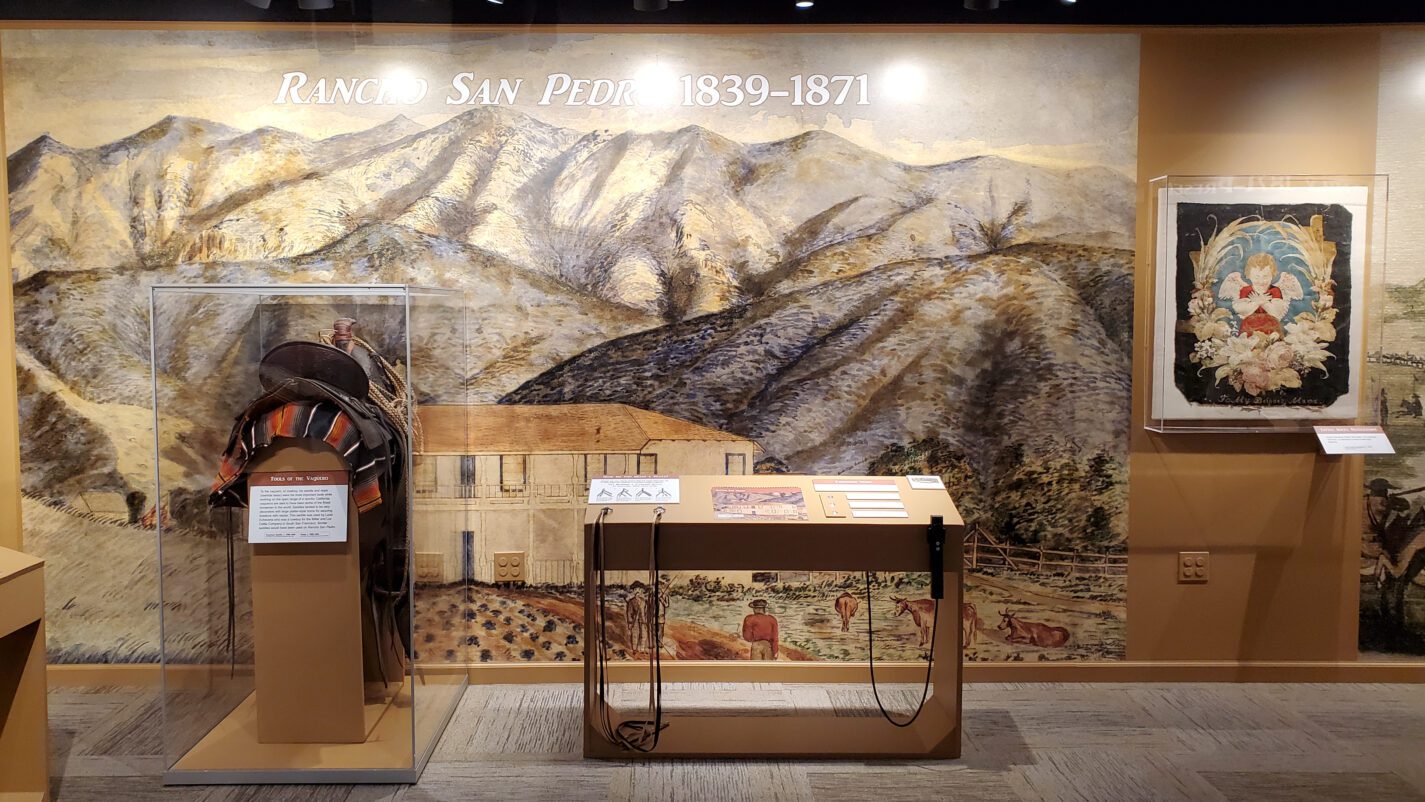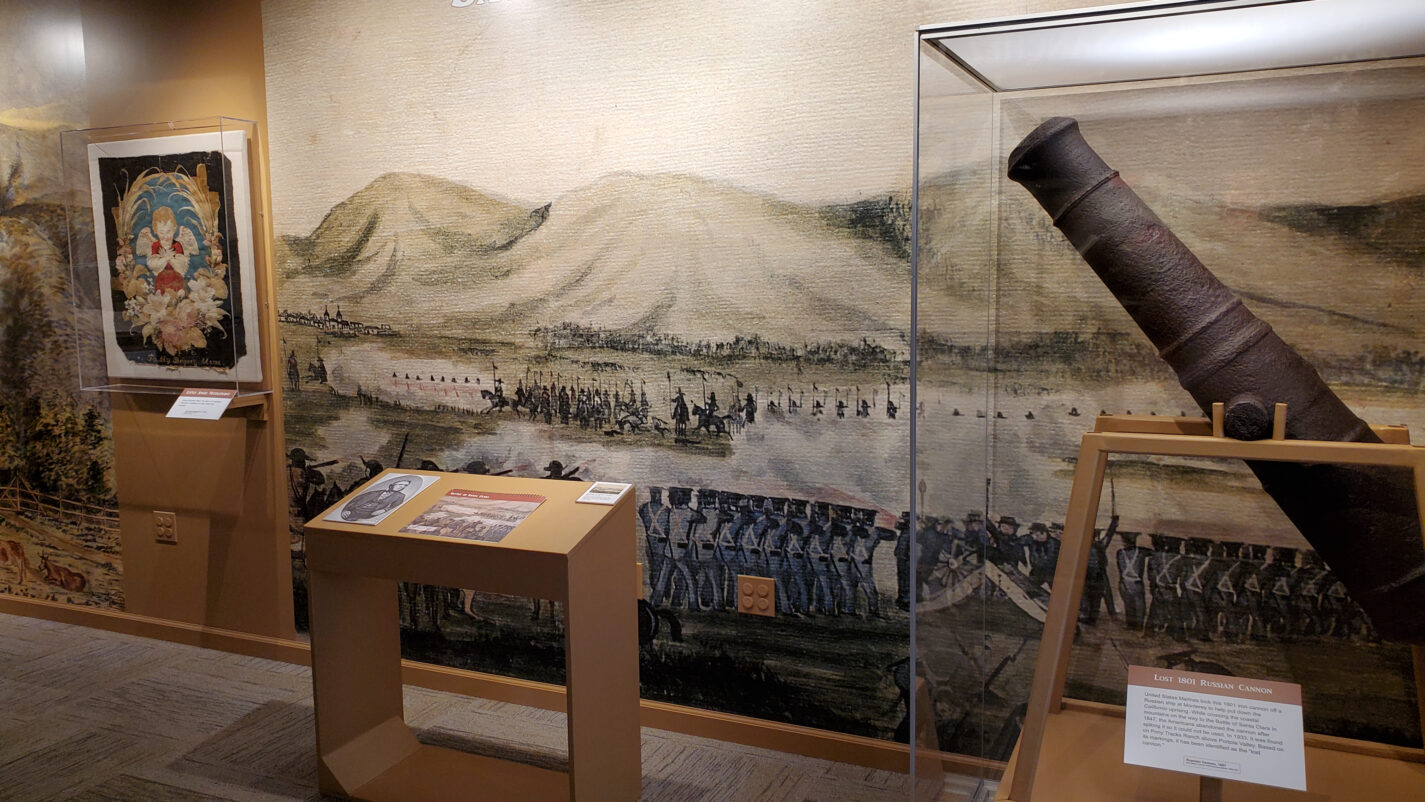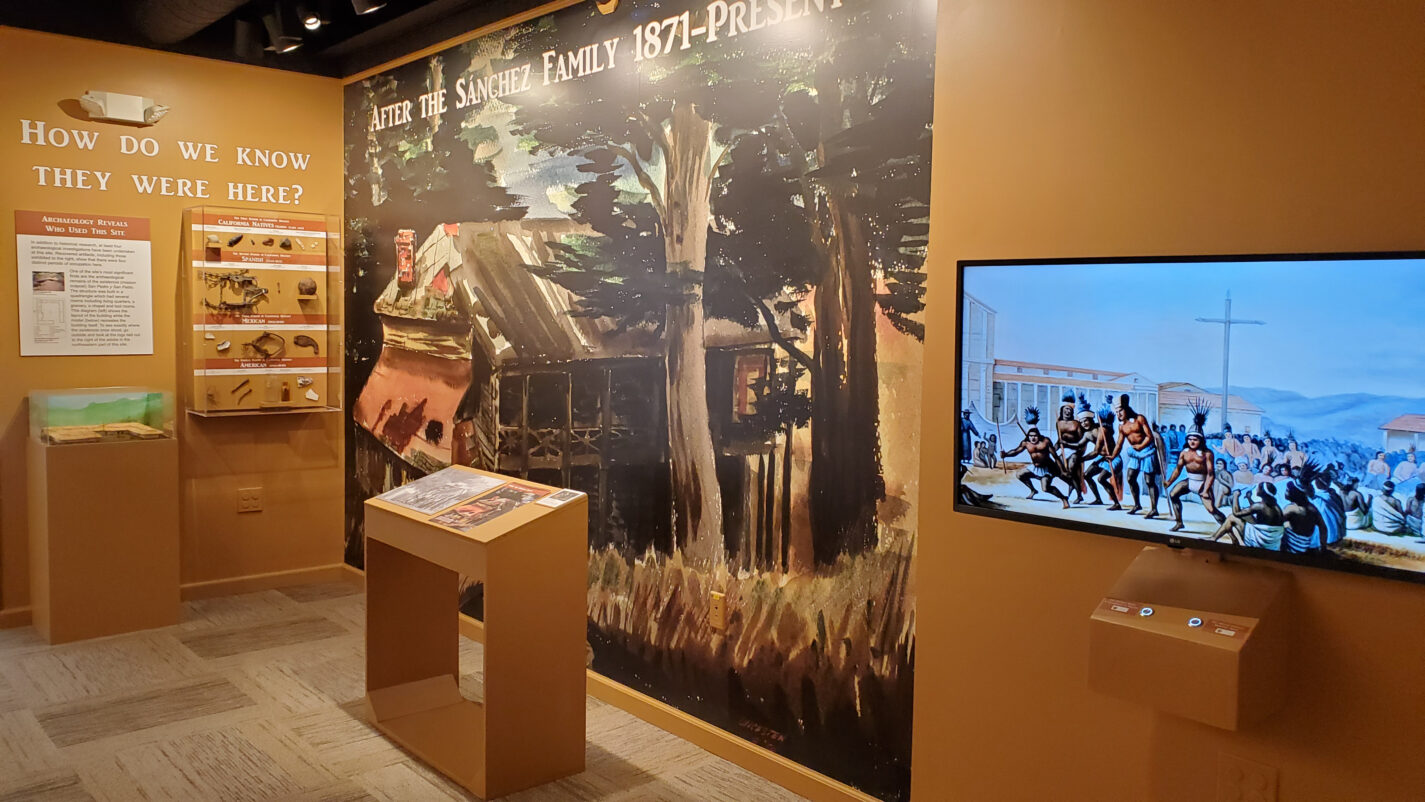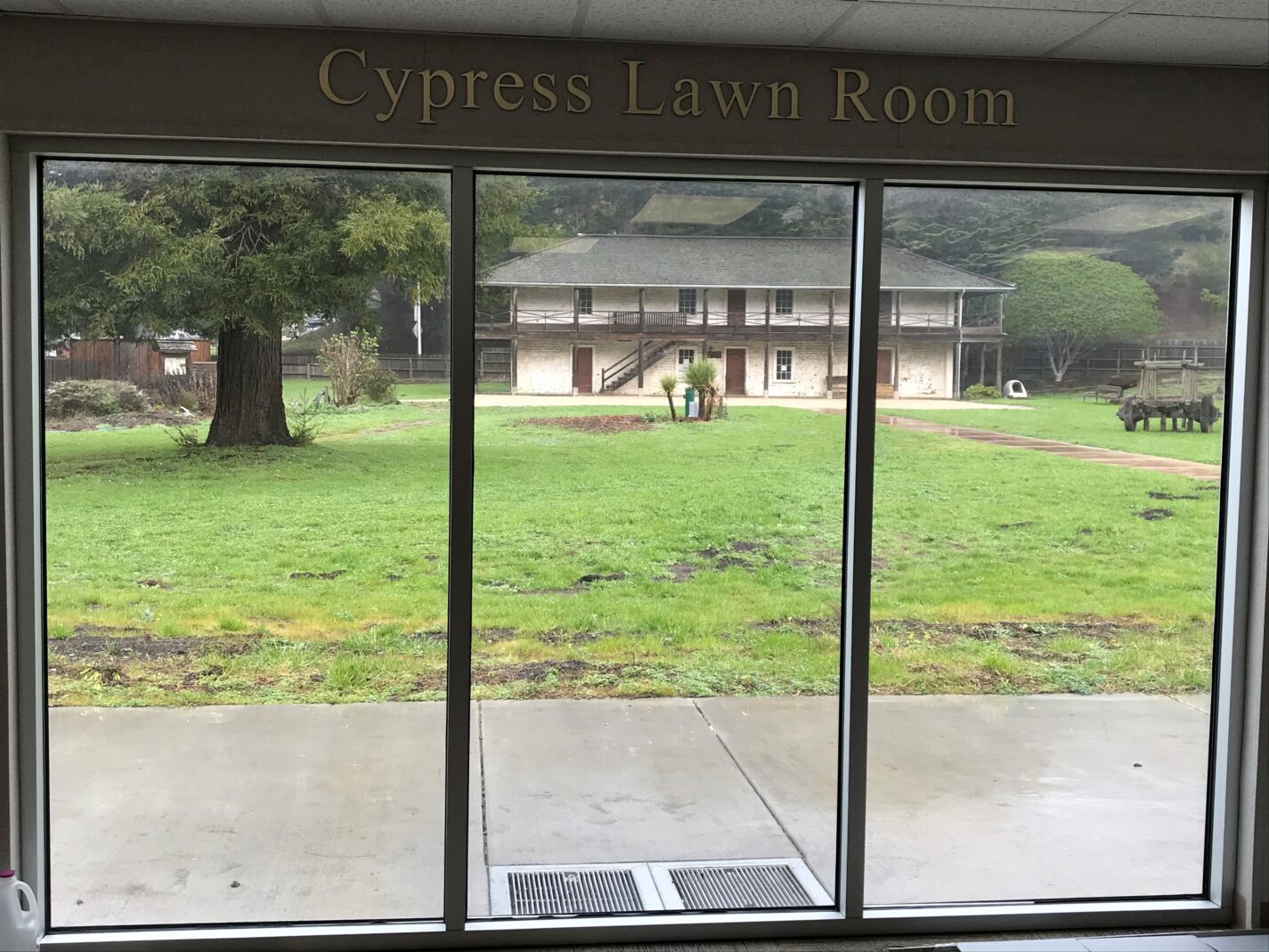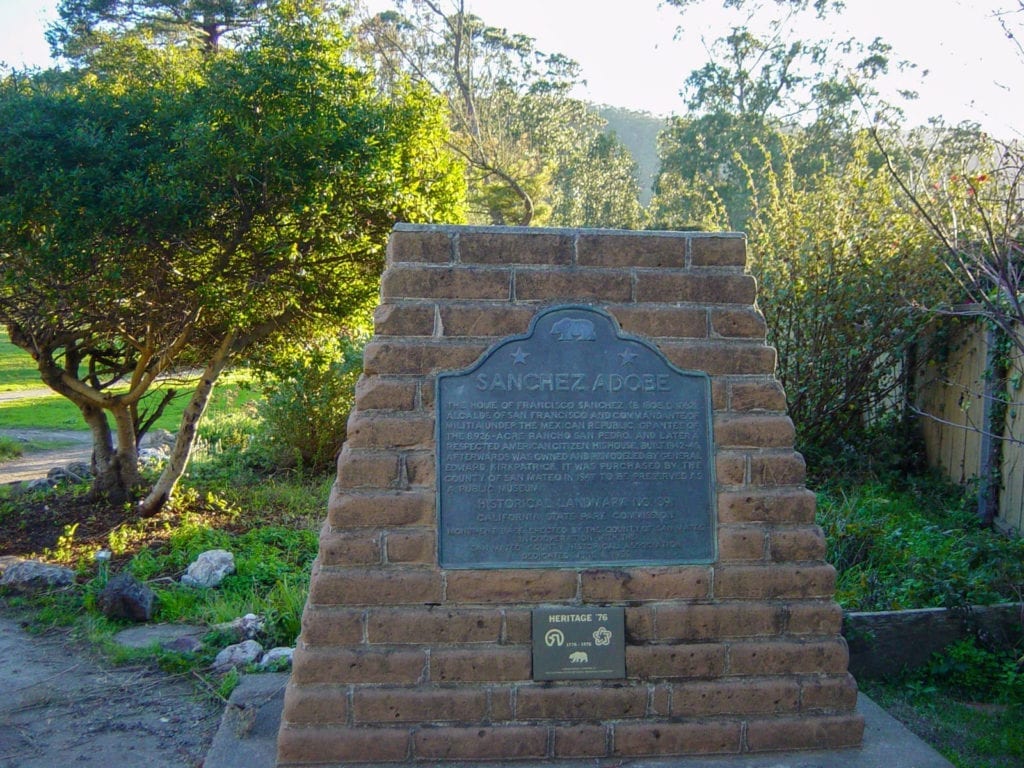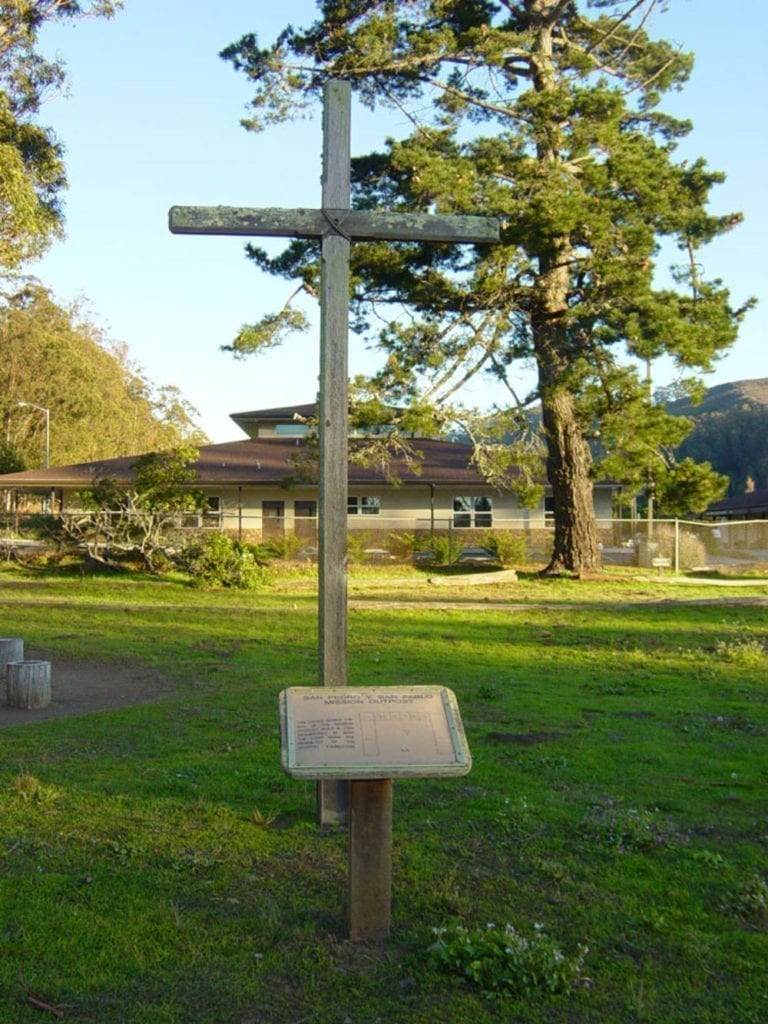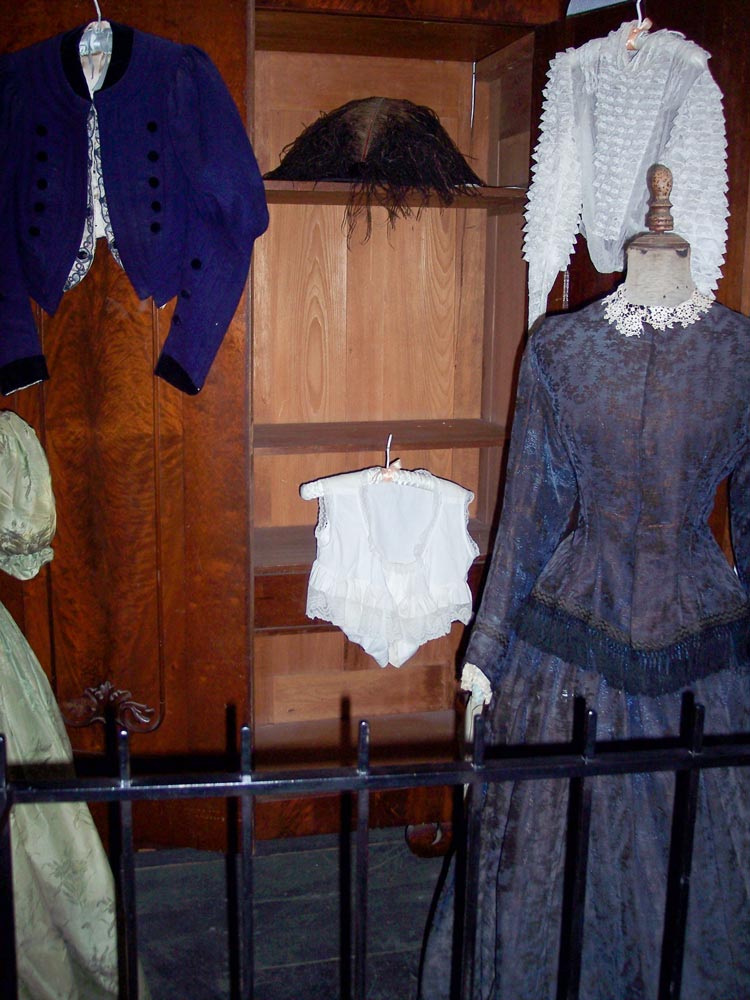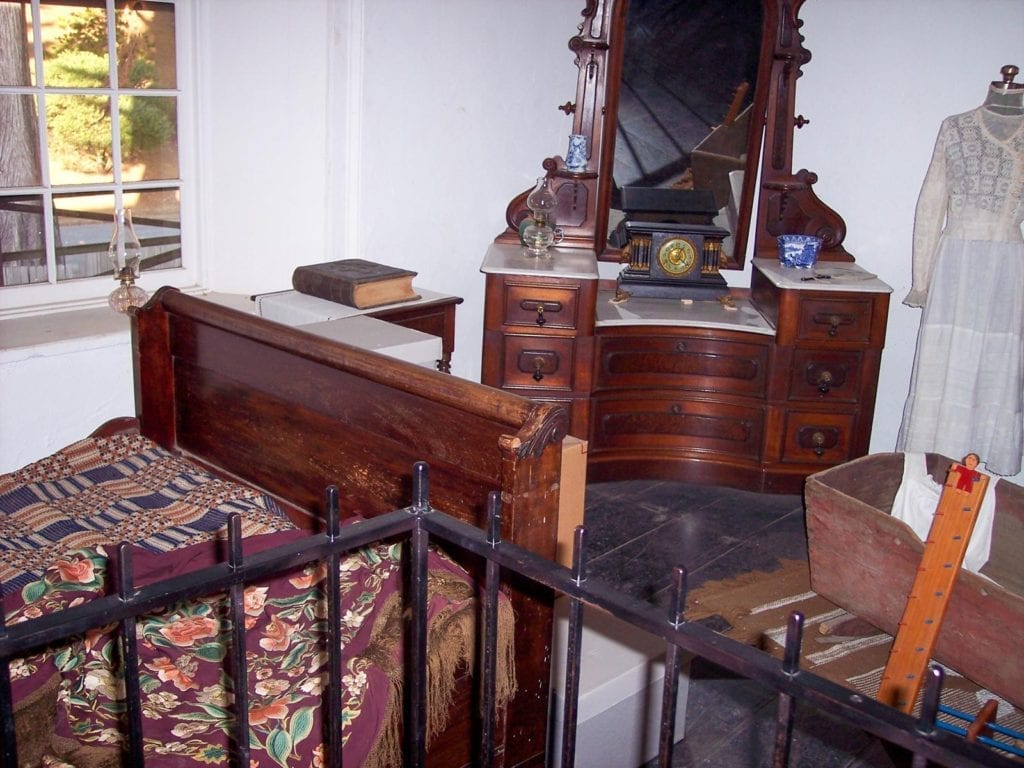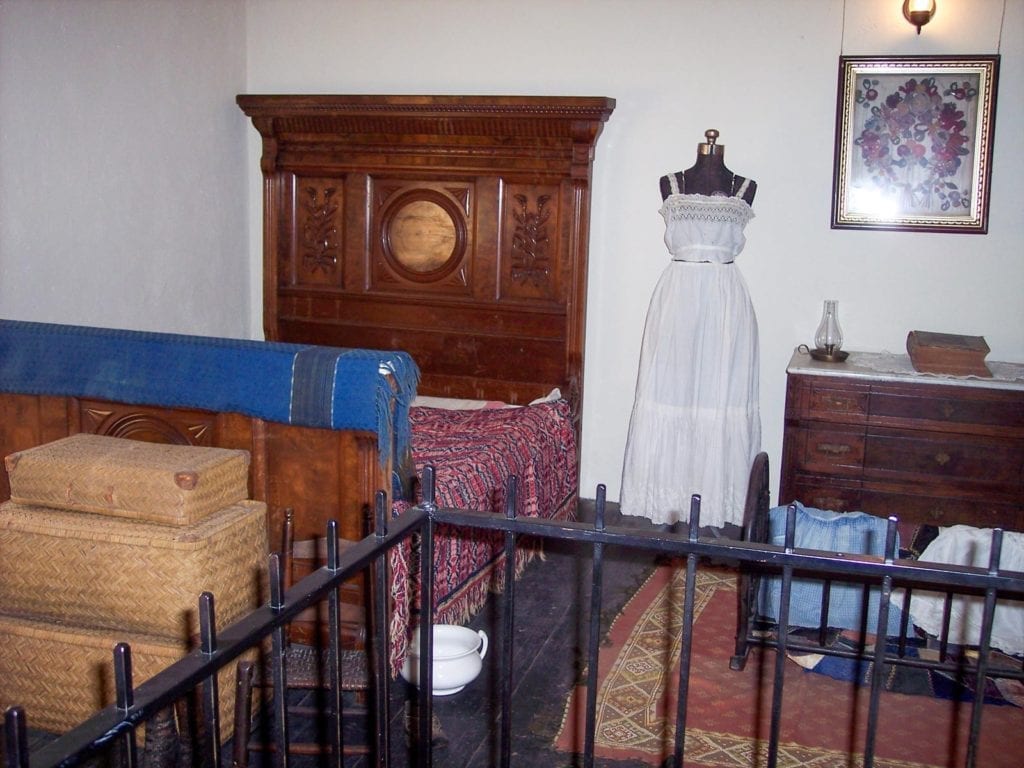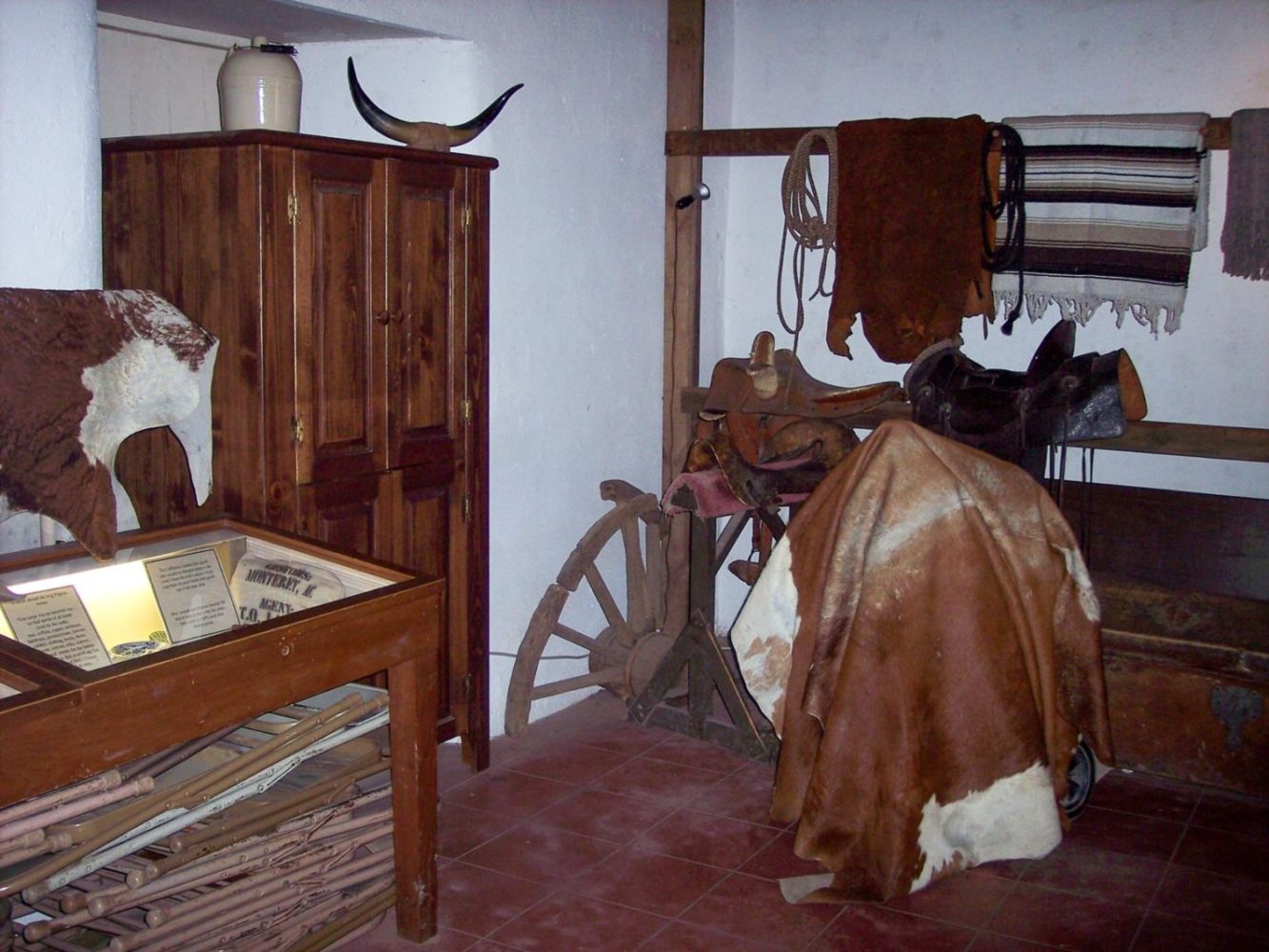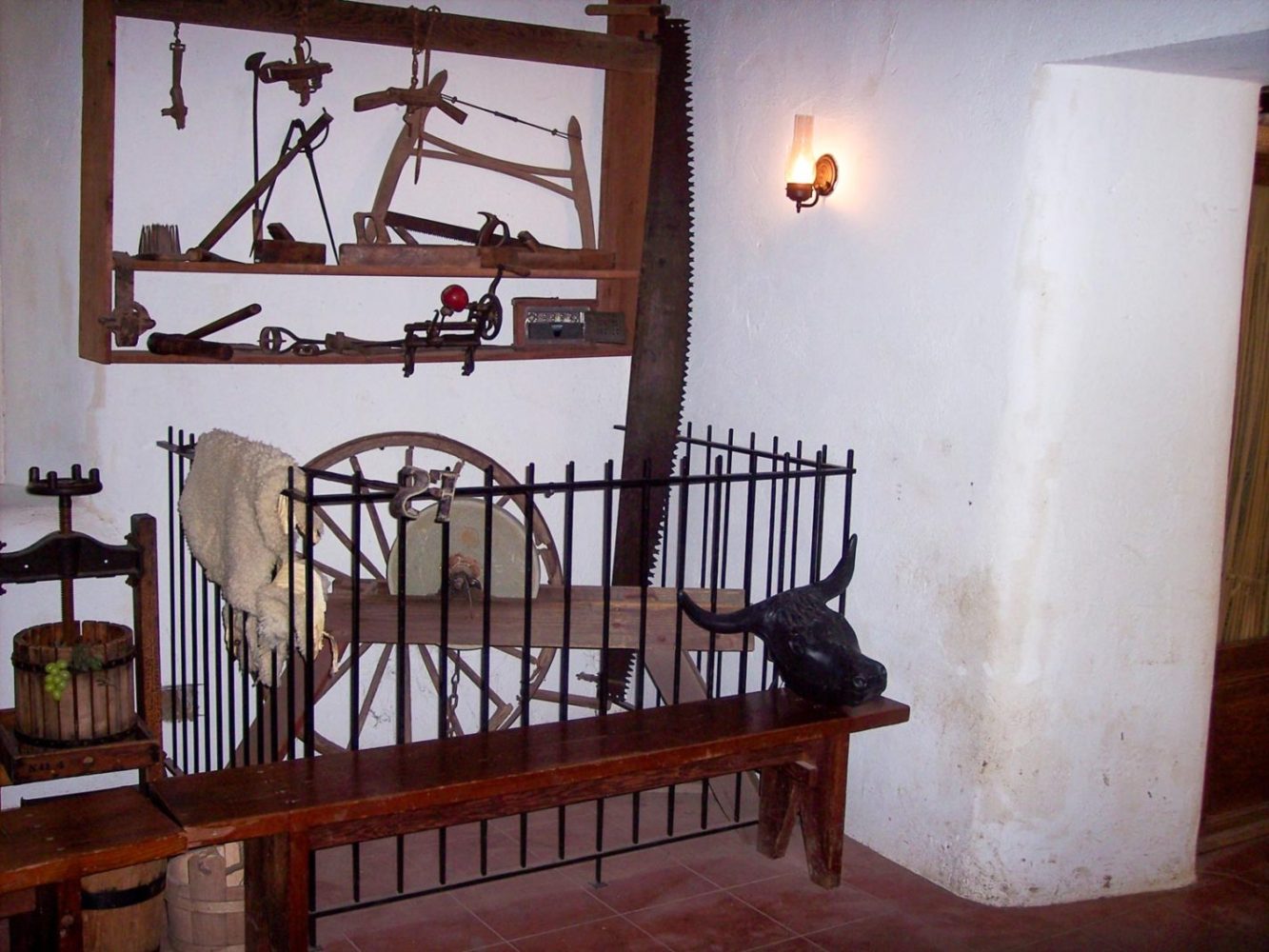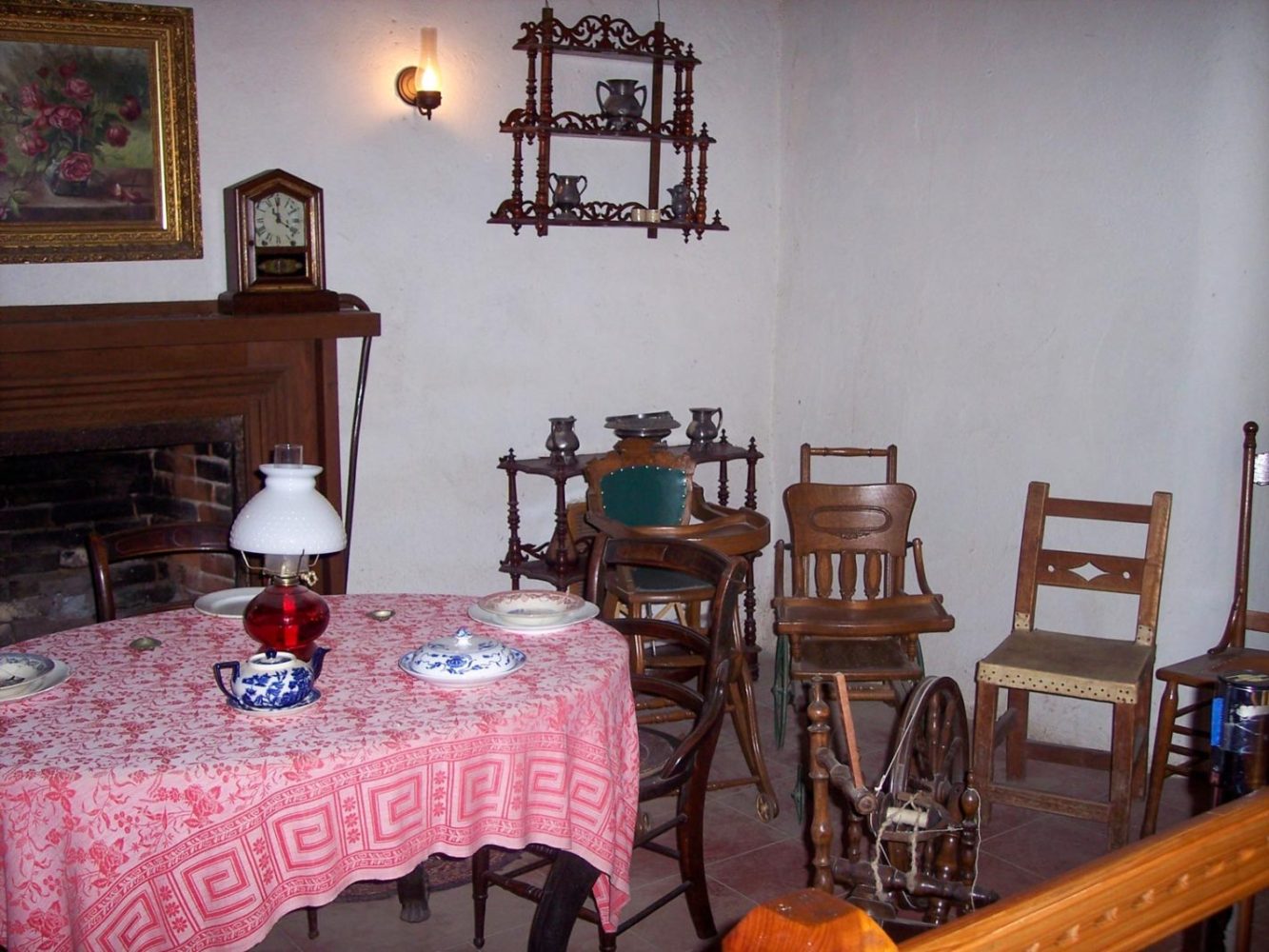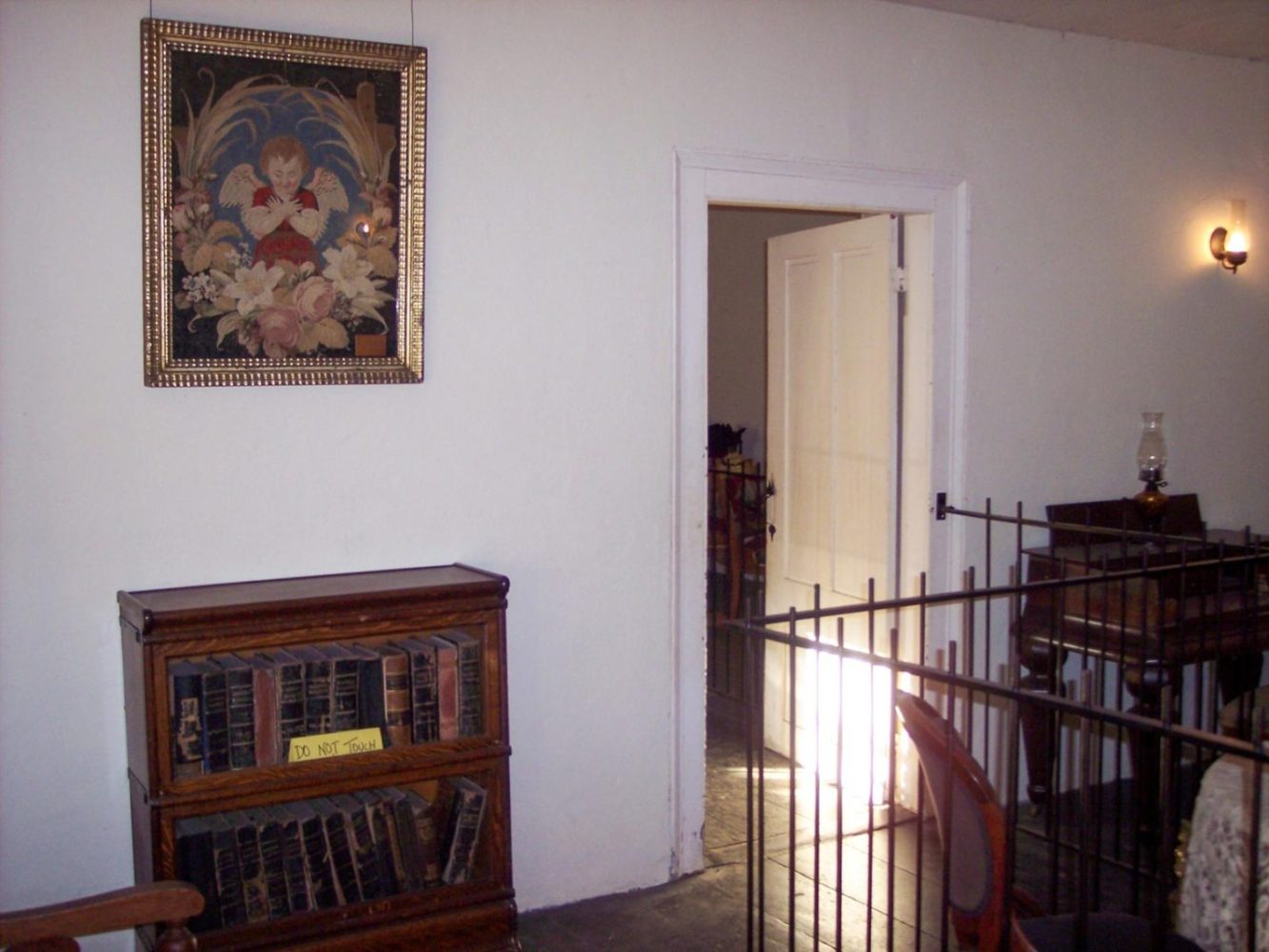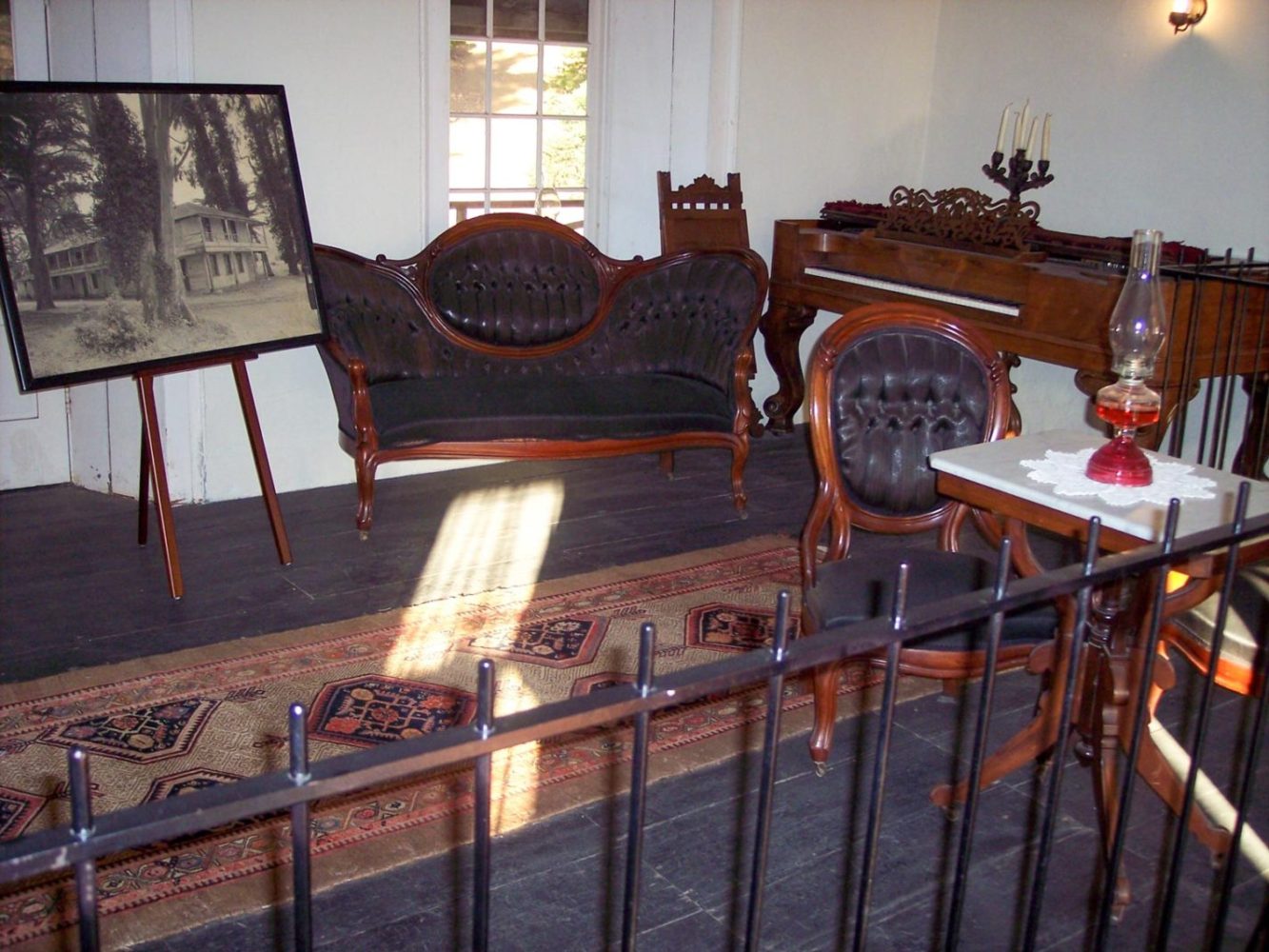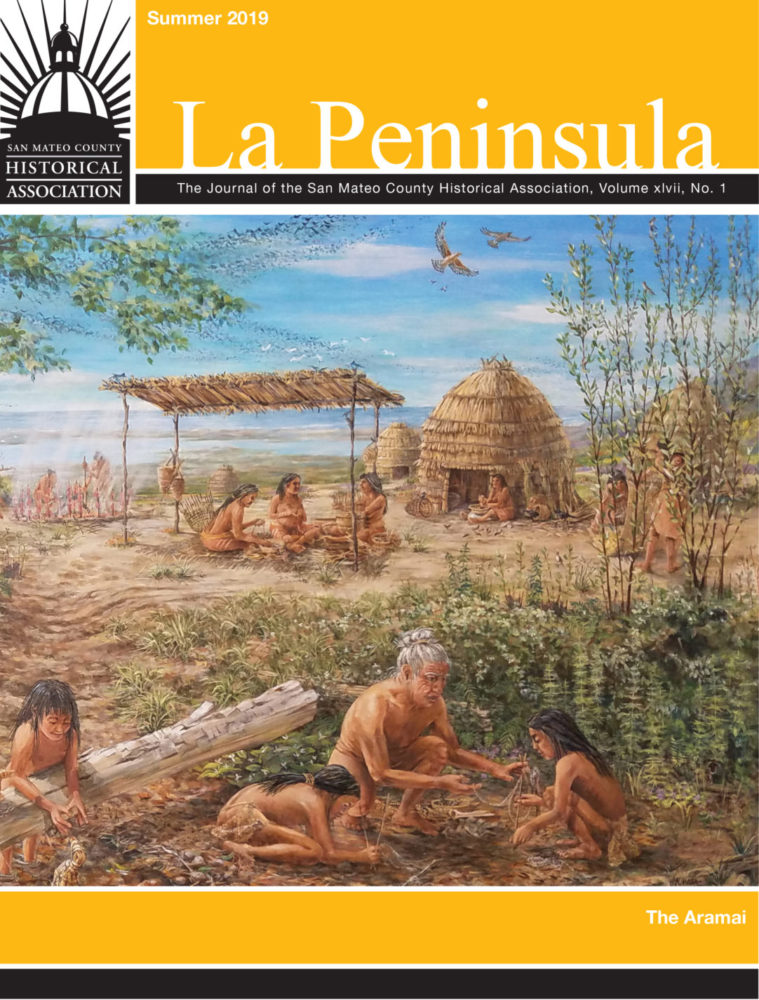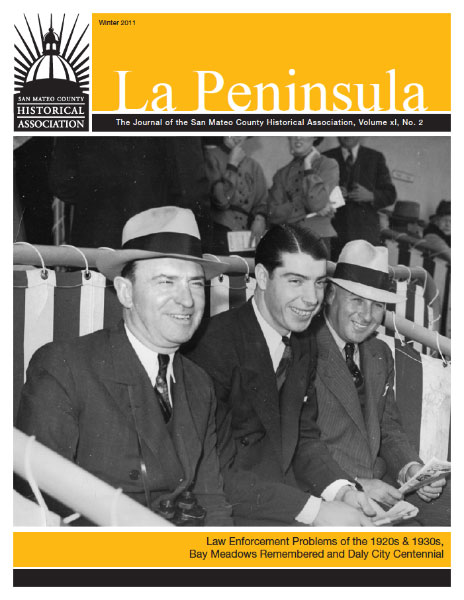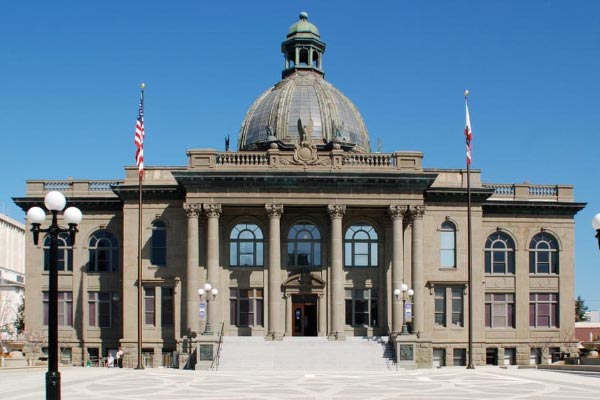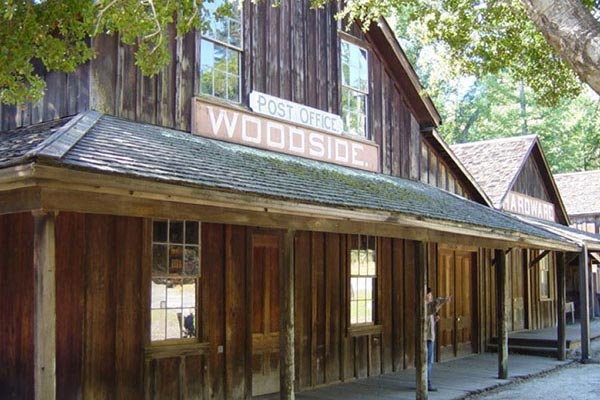School Program
Visit the Sánchez Adobe Historic Site which features the first three periods of California History: Ohlone Indian, Spanish and Mexican.
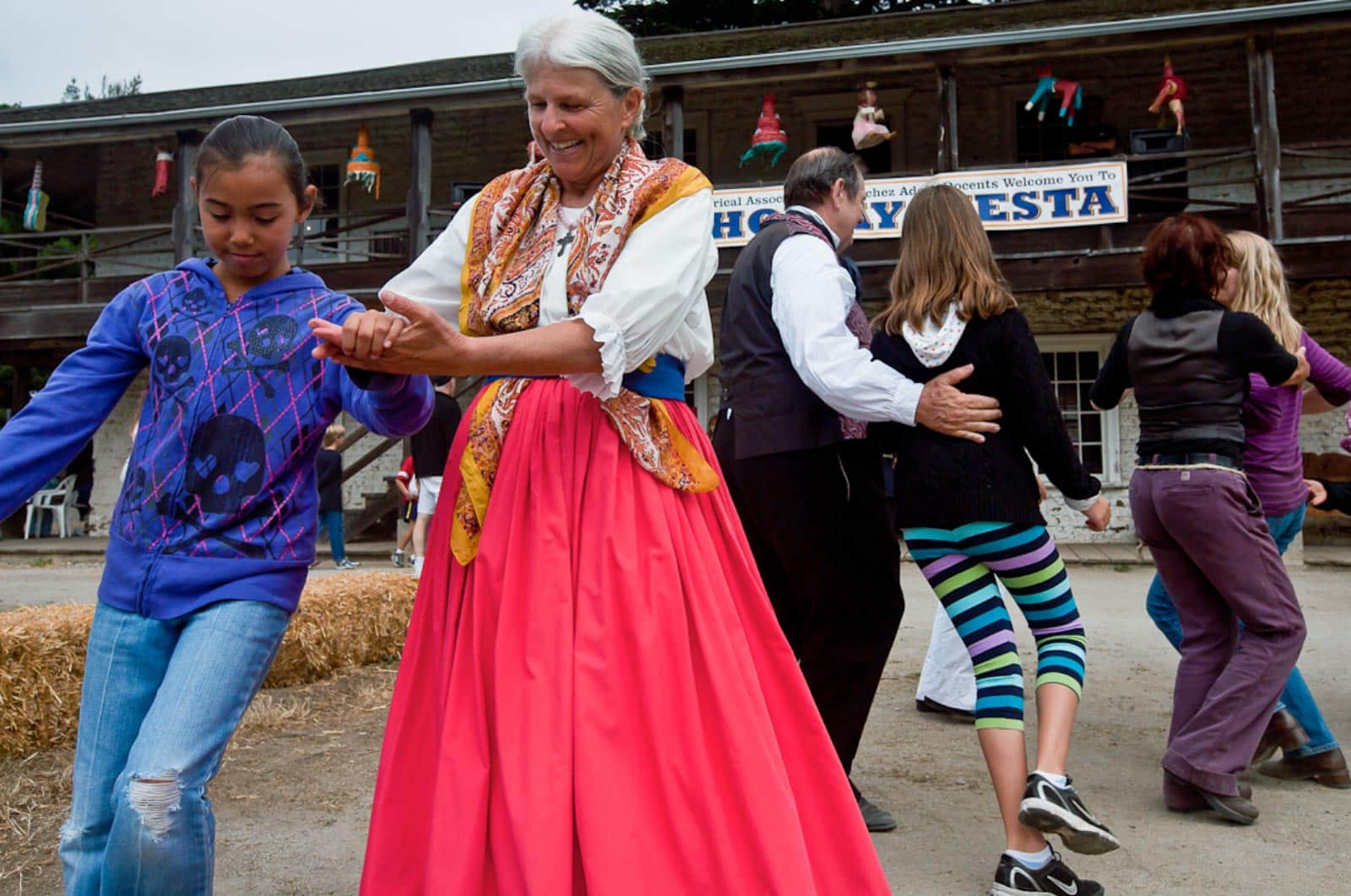
Docents and community members dance to early California music at the Rancho Day Fiesta. Photo by Joe Messina.
In 1947, the County of San Mateo purchased the present five-acre Sánchez Adobe site. Restoration was completed in 1953. The San Mateo County Historical Association operates the site. Planned renovations to better interpret the history of the site can be found in the Master Plan.
Rancho Day Fiesta
Celebrate Mexican California during the Rancho Day Fiesta. Enjoy early Californian music and dancers, real rancho food and make it yourself crafts and demonstrations.
Sánchez Adobe Today
Start your visit at the new Interpretive Center (located at the back of the site) to learn more about the earlier eras of its history.
History of Sánchez Adobe
Native American Period: The Ohlone
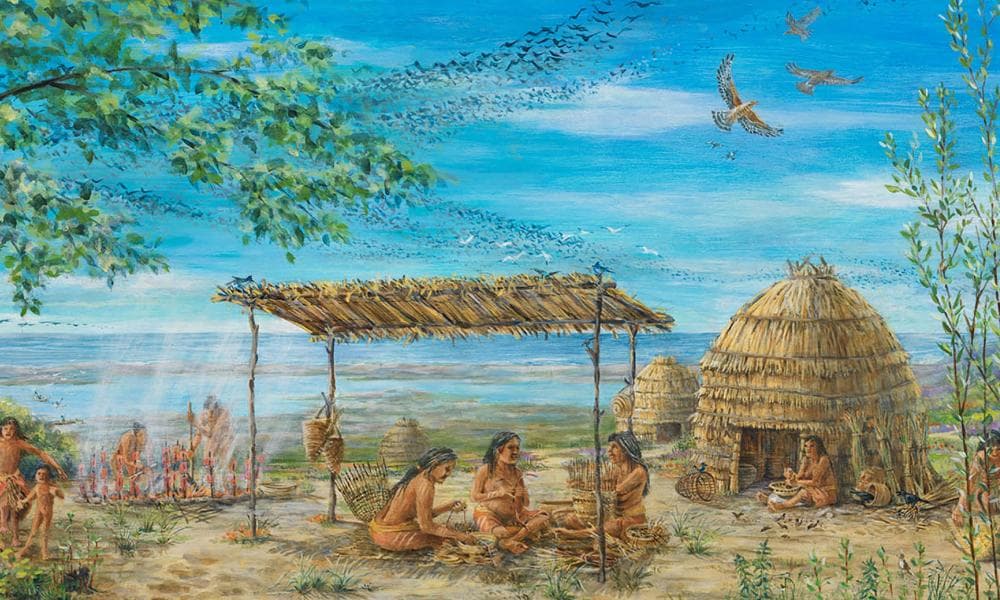
Detail from Pruristac Village by Amy Hosa and Linda Yamane, 2019.
Prior to 1786, Native Americans were the sole human inhabitants of the site. There is limited historical evidence from this time period, but there are references to a Native American village known as Pruristac being located in this area. Archaeological evidence indicates the existence of a shell midden in the vicinity of the existing ranger’s residence on the site.
Mission Outpost for the Spanish
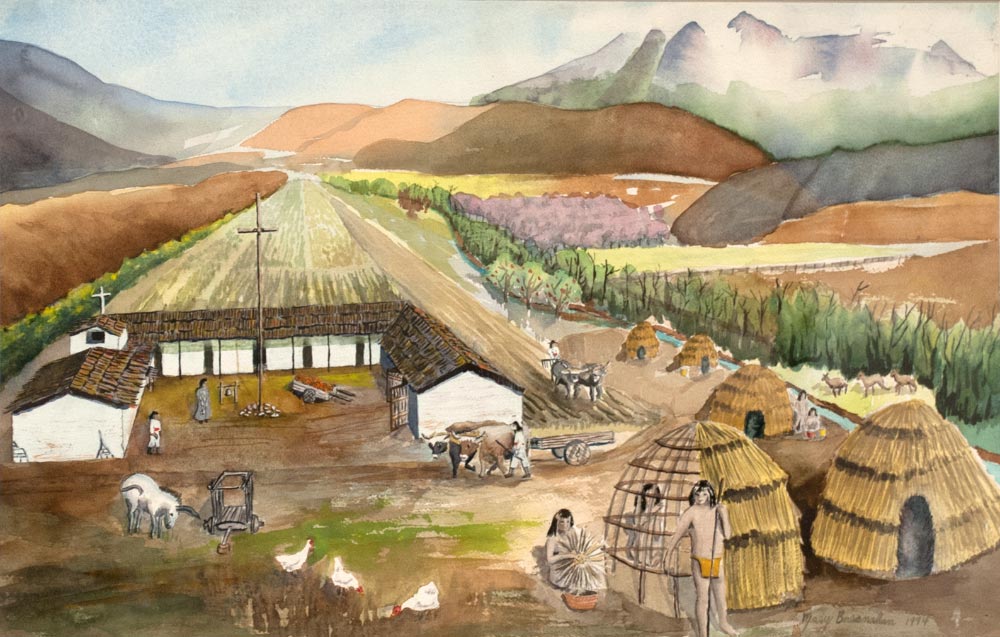
Asistencia by Mary Breshahan
In 1786, padres found it difficult to grow enough food at Mission Dolores. They created an asistencia in the San Pedro Valley named San Pedro y San Pablo. This mission outpost was a support farm where crops such as corn and wheat were grown. The asistencia building included living quarters for the padres, a chapel, workrooms and storage for grain. Food production slowed after an epidemic in 1792. Archeological excavations in 1978 and 1990 uncovered the foundations of the asistencia building.
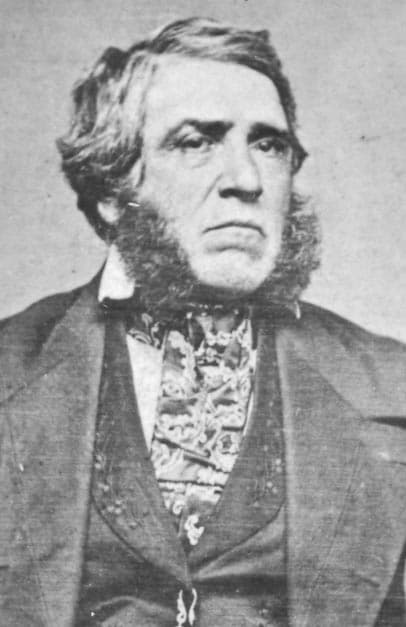
Rancho San Pedro

Sanchez Adobe by A. Chase, 1865.
In 1839, Don Francisco Sánchez was granted Rancho San Pedro. The boundaries of his land grant roughly parallel those of the present-day City of Pacifica. Sánchez raised cattle for the hide-and-tallow trade. When ships came to California, Sánchez could trade his hides for manufactured items. Known as the “California Bank Notes,” hides could be made into clothes, shoes, and saddles. Tallow or cow fat was made into soap and candles. He built the Sánchez Adobe as a home for his family between 1842-1846. It is the second oldest building in the county.
Hotel San Pedro
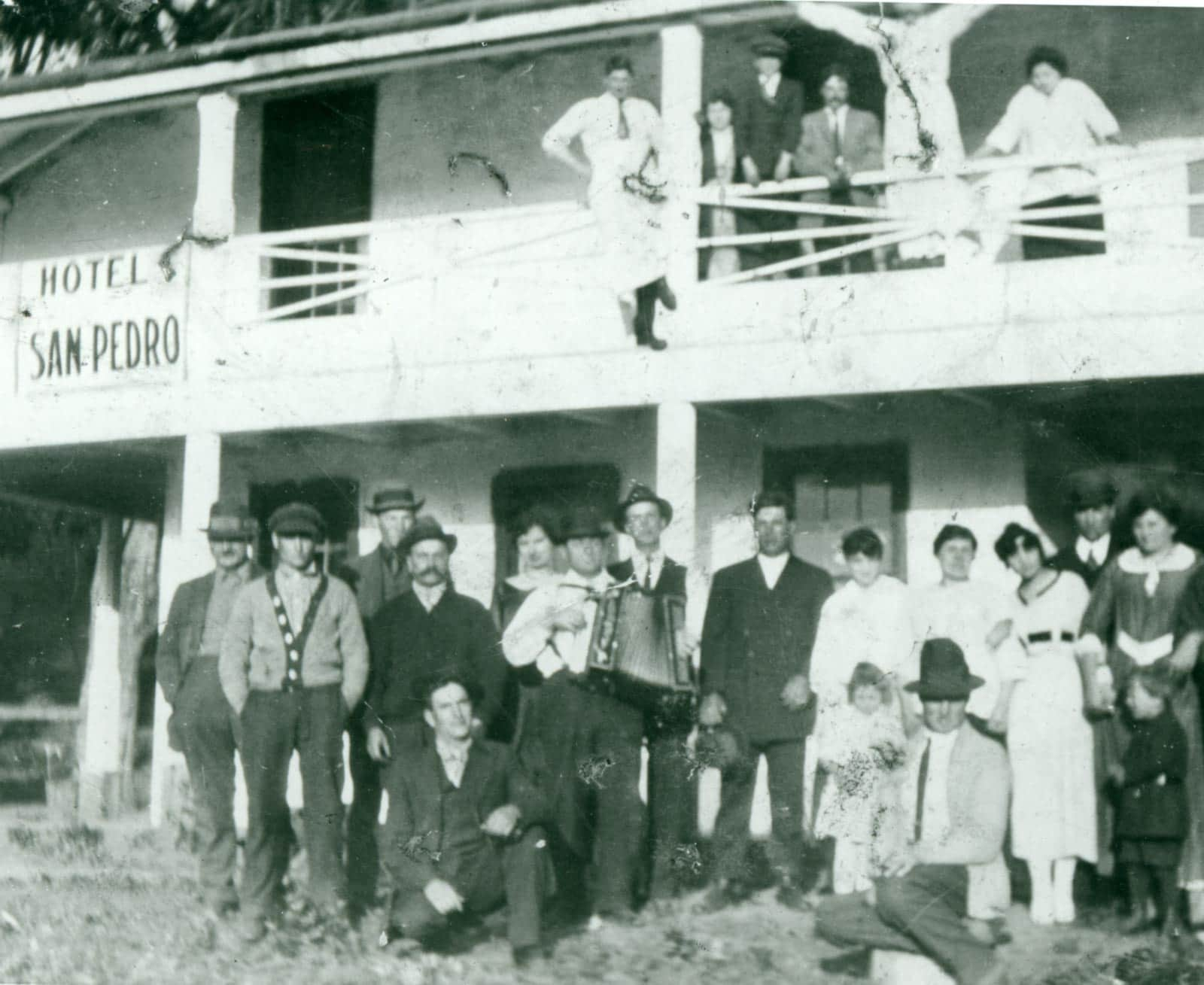
Hotel San Pedro became a speakeasy during Prohibition.
After Francisco Sánchez died, General Edward Kirkpatrick purchased the adobe. He extended and remodeled the house with wooden additions creating a total of 20 rooms. In 1908, the adobe became the Hotel San Pedro. It was a popular stop for tourists traveling on the Ocean Shore Railroad. During Prohibition, it became a speakeasy with whiskey stills hidden in the nearby artichoke fields.


